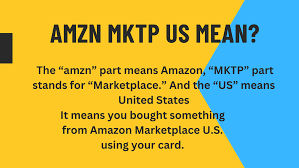What is Amazon Flywheel Model: Diagram| Agency
Amazon Flywheel Concept
The Amazon Flywheel is a business strategy developed by Jeff Bezos in 2001, inspired by Jim Collins’s book “The Best of the Greats.” It is a model that has garnered admiration from numerous companies. At its core, the Amazon Flywheel revolves around the idea of a deliberate feedback loop that propels growth and profitability.
This strategy harnesses the power of various interconnected elements to drive overall expansion. By prioritizing the customer experience, Amazon attracts more traffic to its platform and entices third-party sellers to join. This, in turn, enhances the selection of goods available to customers. As Amazon improves its cost structure and achieves economies of scale, it can lower prices, which further fuels the momentum of the flywheel.
What is Amazon Flywheel Model?

The Amazon Flywheel strategy involves leveraging interconnected values to drive traffic and overall growth. It emphasizes the importance of creating a feedback loop that fosters continuous growth and profitability. The concept is influenced by Jim Collins’ book ‘Good to Great,’ which highlights the idea that satisfied customers become advocates, bringing in more customers through positive word-of-mouth.”
To measure the Flywheel effect on an Amazon account, several metrics can be tracked. These include total sales, average order value, and repeat purchase rate, which provide insights into the revenue generated and customer loyalty. Additionally, monitoring reviews and ratings, search rankings, customer service metrics, and advertising metrics can help assess the overall impact of the Flywheel strategy on the business.
In essence, the Amazon Flywheel model is about creating a positive customer experience and making it easy for customers to discover and purchase products, which in turn leads to increased sales, customer satisfaction, and further growth.
In this model, the key components are:
- Selection: Amazon focuses on offering a vast selection of products and services to attract customers and meet their diverse needs. This includes items from various categories, third-party sellers, and exclusive Amazon products.
- Price: Amazon strives to offer competitive prices to customers. This involves leveraging its scale, negotiating deals with suppliers, and using technology to optimize pricing strategies.
- Convenience: Amazon aims to provide a seamless and convenient shopping experience. This includes fast and reliable delivery options, easy return processes, and features like one-click purchasing and personalized recommendations.
- Customer Experience: Amazon prioritizes delivering exceptional customer service. This involves efficient customer support, addressing queries and concerns promptly, and continuously improving the overall shopping experience.
- Traffic: Amazon invests in marketing and advertising to drive traffic to its platform. This includes search engine optimization, online advertising, and partnerships to increase brand visibility and attract more customers.
The Flywheel Model emphasizes that each component reinforces the others, creating a continuous cycle of growth. Satisfied customers lead to increased sales and traffic, which attracts more sellers and expands the selection. This, in turn, drives down costs, allowing Amazon to offer competitive prices and invest in improving convenience and the customer experience.
By consistently focusing on these interconnected components, Amazon has been able to build a powerful business model that has propelled its growth and dominance in the e-commerce industry.
The Amazon Flywheel Diagram:
The Amazon Flywheel Model can be visualized using a diagram that illustrates the interdependent components driving the company’s growth. Let’s break down the key elements of the diagram:
- Customer Experience:
At the core of the Amazon Flywheel is the focus on delivering an exceptional customer experience. This involves providing reliable and fast delivery options, hassle-free returns, and personalized recommendations based on customer preferences. The goal is to create a seamless and convenient shopping experience that keeps customers coming back. - Selection:
A wide and diverse selection of products is critical to attracting and retaining customers. Amazon continuously expands its product catalog by offering items across various categories, including third-party seller products and exclusive Amazon-branded products. The broader the selection, the more likely customers will find what they’re looking for on Amazon. - Price:
Competitive pricing is a key driver of customer acquisition and loyalty. Amazon leverages its scale and negotiating power to offer competitive prices to customers. By keeping prices affordable, Amazon entices customers to choose its platform over competitors, contributing to increased sales volume. - Traffic:
To sustain growth, Amazon actively invests in marketing and advertising efforts to drive traffic to its platform. This includes search engine optimization (SEO) techniques, online advertising campaigns, and strategic partnerships. By enhancing brand visibility and attracting more visitors, Amazon aims to convert them into customers. - Fulfillment and Operations:
Efficient fulfillment and logistics operations are crucial to meeting customer expectations. Amazon has heavily invested in building a robust infrastructure, including warehouses, fulfillment centers, and transportation networks. This enables the company to ensure fast and reliable deliveries, further enhancing the overall customer experience.
The Flywheel Effect:
The Amazon Flywheel Model operates based on a self-reinforcing cycle, also known as the Flywheel Effect. Satisfied customers lead to increased sales and traffic, which, in turn, attracts more sellers to the platform. As the selection expands, Amazon gains more leverage to negotiate better prices with suppliers, allowing them to offer competitive pricing to customers. This cycle continues to gain momentum and drives Amazon’s continuous growth.
Note: It is important to create content that is valuable and informative for readers rather than focusing solely on keyword usage.
Flywheel Amazon Agency
An Amazon flywheel agency is a specialized service provider that helps businesses navigate and optimize their presence on the Amazon platform by leveraging the principles of the Amazon Flywheel Model. These agencies have expertise in various aspects of Amazon selling, including product listing optimization, advertising, inventory management, and customer service.
The core focus of an Amazon flywheel agency is to drive growth and maximize sales for its clients by harnessing the interconnected components of the Amazon flywheel model. Let’s explore how an Amazon flywheel agency operates:
- Customer Experience:
An Amazon flywheel agency understands the importance of delivering an exceptional customer experience. They work closely with their clients to optimize product listings, ensuring accurate and compelling product descriptions, high-quality images, and positive customer reviews. They also assist in managing customer inquiries, providing feedback, and providing prompt support to enhance customer satisfaction. - Selection:
To attract customers and stand out from competitors, an Amazon flywheel agency helps clients optimize their product selection. This involves conducting market research, identifying trending products, assessing competition, and recommending strategies to expand the product catalog. They may also provide insights on pricing strategies to ensure competitiveness in the market. - Price:
Competitive pricing is crucial for Amazon’s success. An Amazon flywheel agency assists clients in monitoring market trends, analyzing competitors’ pricing strategies, and optimizing product pricing to maximize sales and profitability. They may utilize dynamic pricing algorithms and data-driven approaches to ensure optimal pricing decisions. - Traffic:
Driving traffic to product listings is essential for generating sales. An Amazon flywheel agency employs various marketing techniques to increase brand visibility and attract potential customers. This includes optimizing product listings for search engine visibility, running targeted advertising campaigns, and leveraging Amazon’s advertising platforms such as Sponsored Products and Sponsored Brands. - Fulfillment and Operations:
Efficient fulfillment and operations are key to providing a seamless customer experience. An Amazon flywheel agency advises clients on inventory management, ensuring optimal stock levels, and leveraging Amazon’s FBA (Fulfillment by Amazon) program for reliable and fast order fulfillment. They also assist in monitoring and optimizing shipping and delivery processes to minimize customer complaints and returns.
By aligning their strategies with the Amazon Flywheel Model, an Amazon Flywheel agency aims to create a self-reinforcing cycle of growth for their clients. They continuously monitor performance metrics, make data-driven decisions, and provide ongoing support and optimization to help businesses thrive on the Amazon platform.
In simple terms, an Amazon flywheel agency combines expertise in customer experience, product selection, pricing, traffic generation, and fulfillment to assist businesses in achieving growth and success in the Amazon marketplace. Their goal is to create a harmonious and interdependent system that maximizes sales and enhances the overall customer experience.
Tips for a successful Amazon flywheel

One of the key pillars of the Amazon Flywheel strategy is a strong focus on customer experience. As a seller, it is crucial to prioritize making the shopping experience convenient and enjoyable for customers. This can be achieved by offering a wide range of products, competitive prices, fast delivery, and hassle-free returns. Personalized recommendations and excellent customer support are also important. Additionally, offering customer benefits such as discounts, Amazon lightning deals, coupons, and expedited shipping can help enhance customer satisfaction and loyalty.
-
Enhance the customer experience
To enhance the customer experience, it is important to have retail-ready listings with accurate product information and high-quality images. This helps customers make informed purchase decisions. Additionally, as a seller, you should optimize your Amazon storefront with the right ASINs, compelling product descriptions, and visually appealing images to build brand recognition. Creating a captivating and consistent brand experience across your catalog and storefront is also crucial. Furthermore, leveraging the Amazon Brand Store can drive customer engagement and expand your reach to a larger target audience, potentially generating more revenue.
Maintaining a high seller rating is crucial for improving the customer experience on Amazon. Sellers can check their seller rating on Amazon Seller Central under the Performance tab. Positive reviews from customers play a vital role in building trust and boosting sales. Providing excellent customer service and ensuring customer satisfaction is key to receiving positive reviews. Utilizing Amazon FBA (Fulfillment by Amazon) can enable sellers to offer shorter delivery times and benefit from Amazon handling customer service on their behalf.
-
Drive better traffic to your listings
- Enhance listings for SEO optimization to improve visibility
- Highlight products using deals and coupons to attract attention
- Use advertisements strategically to rank higher for targeted keywords
To maximize sales and profits, it is important to develop an effective marketing and pricing strategy. Paying attention to customer reviews and feedback helps identify areas for improvement. Utilizing analytics tools allows for a better understanding of product performance and areas for enhancement.
Analyzing customer interactions, such as reviews and comments, helps identify product performance. Tracking ad visibility assesses marketing strategy effectiveness. Capitalize on top-performing products by targeting them in campaigns and cross-promoting with existing products.
Tracking sell-through rates enables you to assess product sales speed and adjust inventory levels accordingly. It also helps identify customer demand trends. Monitoring inventory availability ensures sufficient stock and prevents stockouts. Tracking pricing is vital for assessing profitability and maintaining competitiveness. It allows for testing different repricing strategies to find the optimal pricing for each product.

Recap:
The Amazon Flywheel Model is a concept that encapsulates Amazon’s strategic approach to business growth and customer satisfaction. It represents the interconnectedness and self-reinforcing nature of various components within Amazon’s ecosystem.
The Amazon Flywheel Model provides a comprehensive framework for understanding how Amazon has achieved remarkable success in the e-commerce industry. By prioritizing customer experience, selection, competitive pricing, traffic generation, and efficient operations, Amazon has created a virtuous cycle that keeps its business thriving.
Understanding and leveraging the principles of the Amazon Flywheel Model can provide valuable insights for businesses looking to enhance their growth strategies and prioritize customer satisfaction in today’s competitive marketplace.
- Can You Use AfterPay on Amazon: Guide for Shoppers in 2024
- How to Write Reviews for Amazon and Get Paid:
- What is Amazon Marketplace NA PA
- How to Look up Amazon LPN Number
- Maximizing Your Savings with Amazon Fresh Weekly Ads
- What is the most expensive item on Amazon: The Pinnacle of Luxury
- How to Set up Amazon Smile on App
- How to Cancel a Return on Amazon App Request Order



